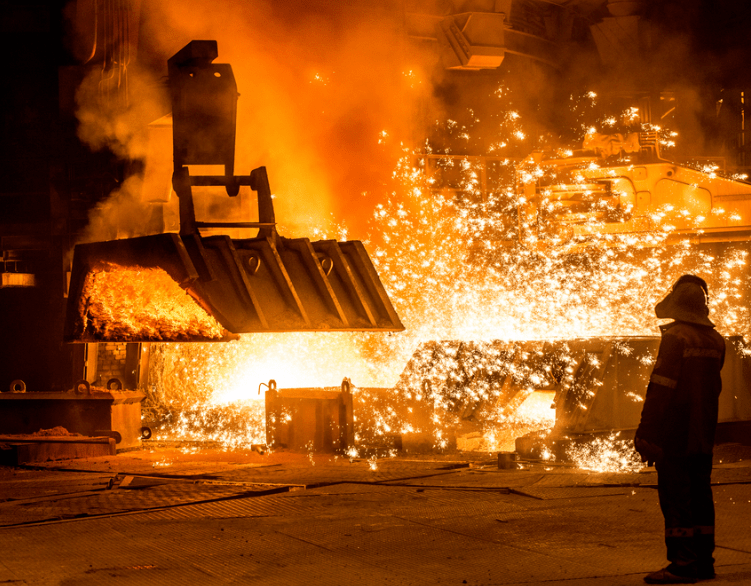China’s Caixin survey of service industries surprised analysts with a strong expansionary reading of 55 in May, against a consensus expectation of 47. Of the purchasing managers polled by Caixin, that is, 55% saw higher business volume during the month.
Similar surveys of service industries in the other major economies continue to show contraction.

Caixin’s manufacturing survey for China showed a positive reading of 50.7, while the comparable Markit PMI Index for the US in May came in at 39.8. The Caixin services reading reflects a broad sample of privately-owned business, and suggests that Chinese consumers are spending freely. By all indications, this is a grass-roots economic boom rather than an investment-driven expansion driven by state spending.
China’s stock market is the world’s best performer in US dollar terms among the world’s major venues.
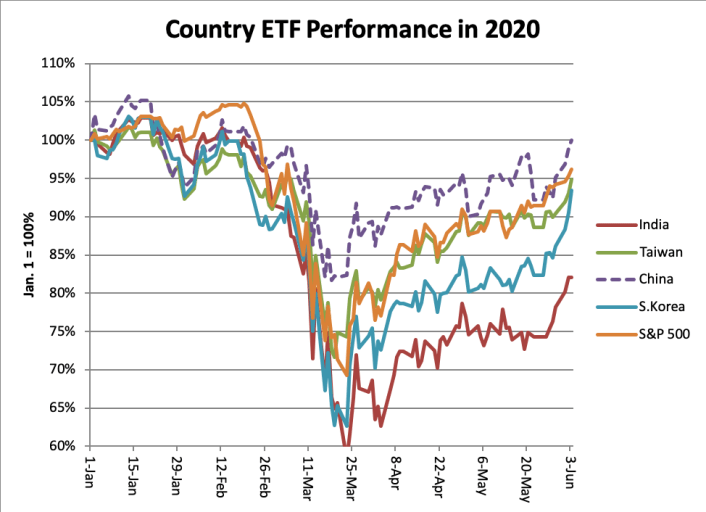
The strongest performance in China’s stock market came from consumer staples, information technology and healthcare, reinforcing the impression that Chinese consumers are driving the recovery.
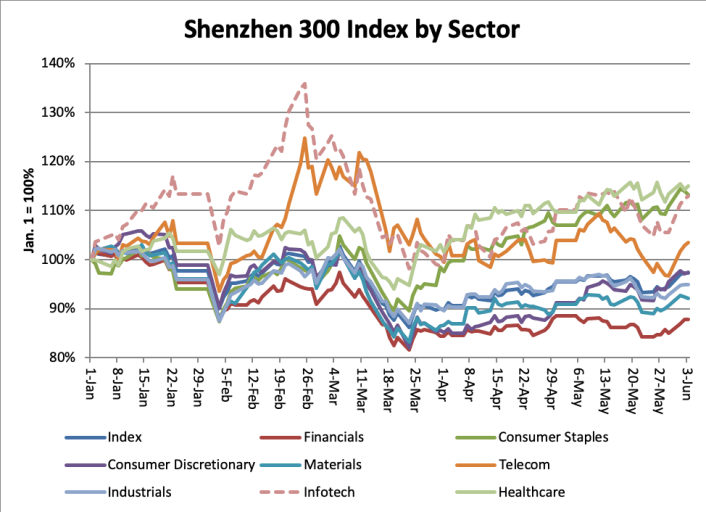
May retail sales data will be an important gauge. China’s retail sales as of April were down 7.5% year on year, vs. a 22% decline in the US.
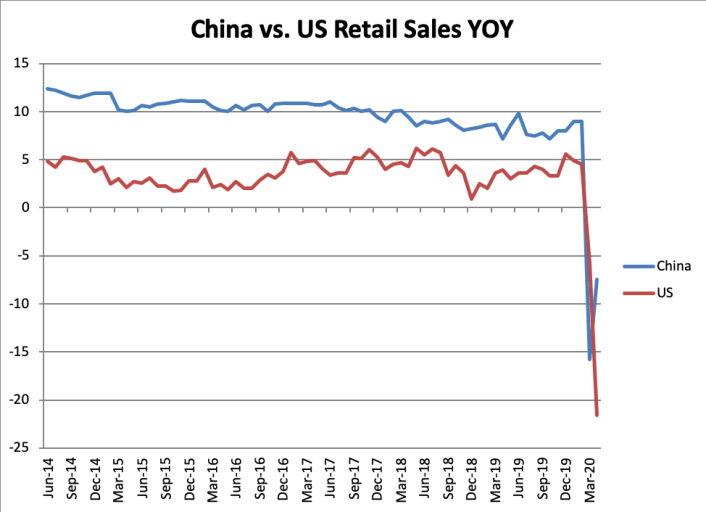
Part of China’s resilience despite contracting Western economies stems from a reduction in its dependence on US exports. China’s exports to the US in nominal dollars are virtually flat over the past eight years, while exports to Asia have risen by 32%. As I reported May 20 (“The Asian Century Began in May 2020“), intra-Asian trade boomed during April as the major Asian economies went back to work.
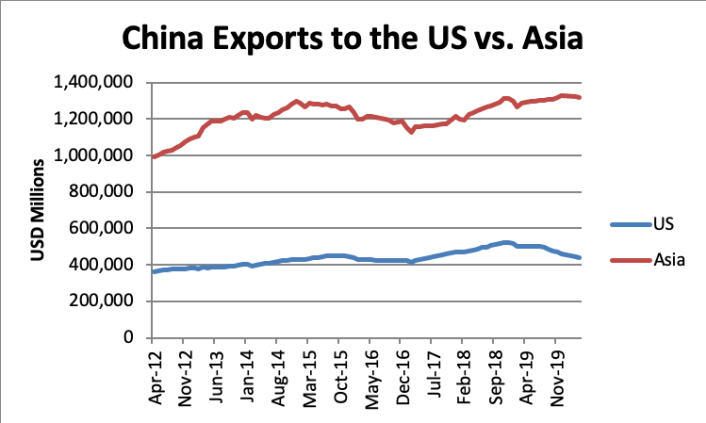
Fiscal stimulus in China has been modest compared to most industrial countries. China’s central government probably will run a fiscal deficit of 3.6% of GDP, up from an earlier target of 2.8% of GDP. The US fiscal deficit by contrast will rise to nearly $4 trillion this year, or close to 20% of GDP.
Compared to the $3 trillion in US emergency government spending and an additional $3 trillion in Federal Reserve quantitative easing, China’s fiscal plans are modest. The government plans to sell RMB 3.75 trillion (about US$525 billion) in special local government bonds to fund health care and other projects, and support an additional RMB 300 billion of loans to small and medium enterprises.
China has claimed virtually no new cases of Covid-19 infection since March. In a high-profile sweep, the entire 11 million population of the city of Wuhan was tested last month, and the authorities reported 200 previously undetected cases of asymptomatic Covid-19.
According to Chinese authorities, there are only 72 active cases in the entire country. Some Western critics have challenged China’s reporting, and there is no way to verify or refute government data on the rate of new infections.
Interviews with residents of major Chinese cities, though, suggest that conditions are not much different from those in Seoul, Taipei or Hong Kong, where infection rates are extremely low.
New cases in the US are still running at around 10,000 a day, led by Florida, Arizona, North Carolina, New York and Maryland.
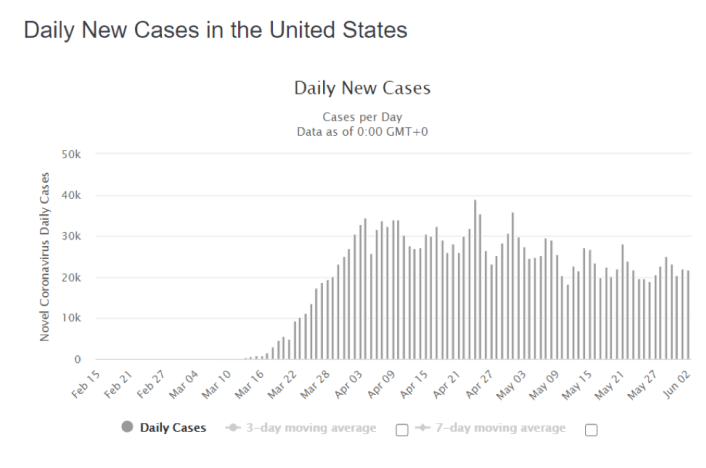
This story appeared first on Asia Times




